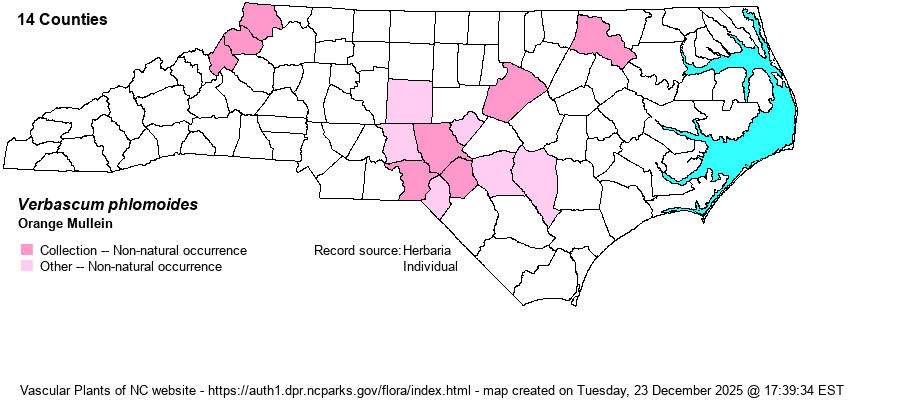| Author | L. | |
| Distribution | Mostly in the northern Mountains and western Sandhills, from which it is moving into the lower Piedmont; also Halifax County. In late May of 2025, small populations were seen beside I-295 in Cumberland Co. and NC 24 in Sampson County.
Native of Eurasia; in N.A. from P.E.I. to B.C. south to GA, AR, CO, OR. | |
| Abundance | Common in the western Sandhills proper; rare to uncommon in the northern Mountains; rare (as of June 2025) in the Piedmont and in the flat Coastal Plain. One population in Pinebluff (Moore Co.) held thousands of individuals in 2004. Since then, the species has undergone an explosion and now has reached Randolph County, Sampson County, and Halifax County. Uncountable plants occupy the Bird Dog Field Trial grounds at Sandhills Game Land in Richmond County, where they were absent prior to 2000. | |
| Habitat | Dry sandy to loamy sand soils of roadsides, fields, fallow cropfields, pastures, vacant lots (Hamlet, Richmond Co.), along the New River (Ashe Co.). | |
| Phenology | Flowering and fruiting May-August. | |
| Identification | Keys usually state that this species has unbranched inflorescences; however, short flowering shoots from upper leaf axils make it look like the inflorescence is branched. The central, terminal spike is longer and narrower than that of V. thapsus, with the flowers much less crowded. Overall, the plant has a shorter tomentum than that much more common species, and the leaves are a darker green than are the more glaucous/pale green leaves in that species. Both species are quite tall and elegant, often to 4-5 feet tall, with numerous large yellow flowers. | |
| Taxonomic Comments | | |
| Other Common Name(s) | | |
| State Rank | SE | |
| Global Rank | GNR | |
| State Status | | |
| US Status | | |
| USACE-agcp | | |
| USACE-emp | | |

